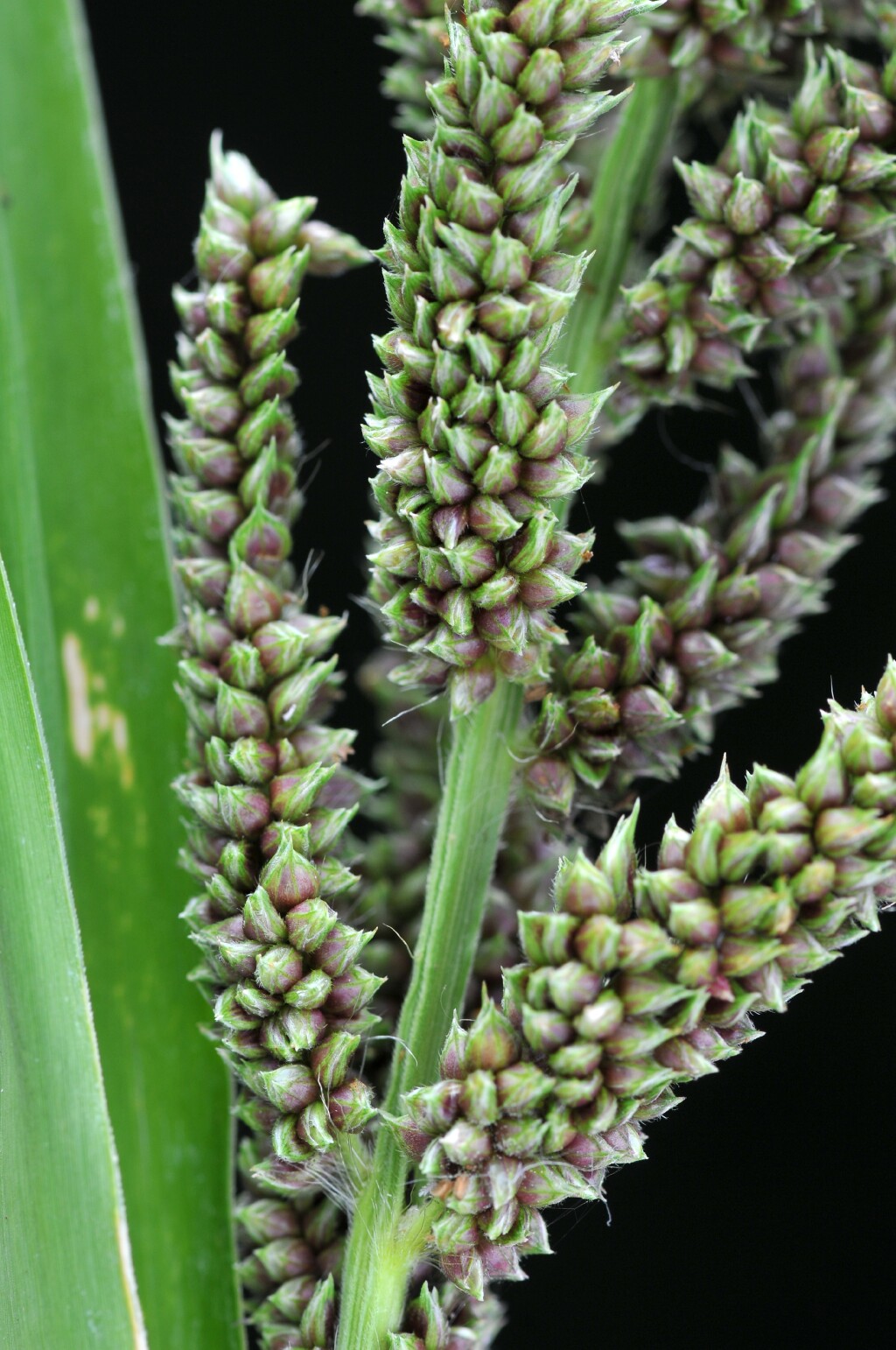Echinochloa esculenta
(A.Braun) H.Scholz Japanese MilletTufted annual. Culms erect, to 120 cm high. Leaves glabrous; blade flat, 8–30 cm long and 8–30 mm wide, margins often undulate. Panicle 7–16 cm long, fully exserted at maturity; primary branches spreading, 3–7 cm long, scabrous, with 1–several bristles subtending each group of spikelets. Spikelets plump, gaping at maturity, 3.2–4.5 mm long, very densely aggregated and ranked in 4–6 rows; lower glume 3–5-nerved, ovate, 1–1.6 mm long, glabrous or hairy, mucronate; upper glume 5-nerved, slightly shorter than spikelet, acuminate, dorsally rounded, scabrous along the nerves; lower floret neuter; lower lemma as long as spikelet, flat, acuminate; palea c. three-quarters as long as lemma, membranous; upper lemma 2.9–3.5 mm long, dorsally rounded, smooth, pale to mid-brown at maturity, abruptly narrowed to short apical point; upper palea subequal to lemma. Flowers throughout year but mainly Nov.–Mar.
MuM, Wim, VVP, GipP, CVU, NIS, EGL, EGU, HSF, Strz. Naturalised in all States. Scattered widely through the state but not common (e.g. Kaniva, Portland, Robinvale area, Melbourne suburbs, Tallangatta, Metung etc.).
Derived via cultivation from Echinochloa crus-galli and cultivated as a seed and forage crop. Often used in bird-seed mixes and most naturalised occurrences are probably a result of spilt seed. Intermediates occur between E. esculenta and E. crus-galli.
Walsh, N.G. (1994). Poaceae. In: Walsh, N.G.; Entwisle, T.J., Flora of Victoria Vol. 2, Ferns and Allied Plants, Conifers and Monocotyledons, pp. 356–627. Inkata Press, Melbourne.
 Spinning
Spinning



